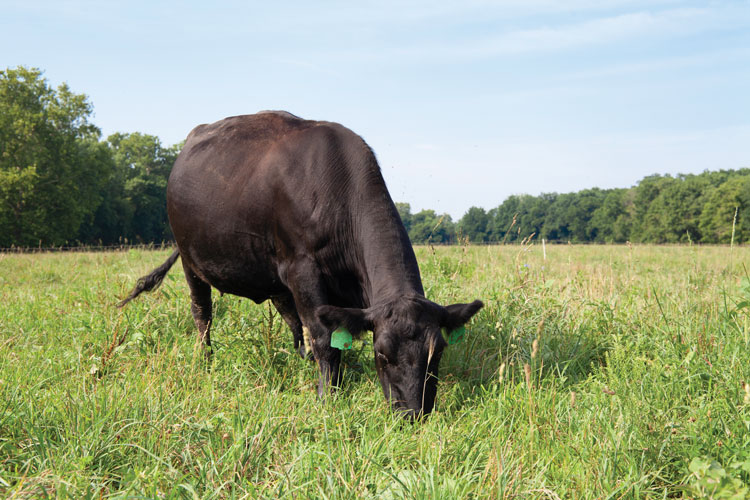The author is a livestock area associate agent with the University of Arizona based in Cochise County.

In an ideal world, pastures would always be green with plenty of forage, cattle would never get sick or eat something they weren’t supposed to, and if we’re dreaming big, toxic weeds wouldn’t even exist. Cattle certainly wouldn’t be found dead with no explanation.
Unfortunately, we live in the real world, and livestock sickness and death loss does occur. In some cases, the cause of the problem is apparent. There is an obvious injury or the vet can perform a quick test and confirm the cause of death. In most cases, however, the cause of a sudden illness or significant death loss in a herd is elusive; it can be a perfect storm of multiple factors that may never be explained.
As an extension agent, I’m occasionally called to work alongside veterinarians to determine the probable causes of these mysterious deaths. Often, the pasture or something in it turns out to be the culprit and the death is usually precipitated by one or more management decisions. It’s a bit like playing detective and gathering clues until you have enough evidence to point to a likely suspect that can hopefully be confirmed by veterinary testing.
Ask questions
The first step in the investigation is to gather information about the cattle and their management. What are the signs of illness? Which cattle — old cows, calves, or all of them — are affected? Gather information on vaccination records, the herd health plan, and testing protocols for diseases like bovine viral diarrhea virus (BVDV). If the signs of illness match a common disease not covered by the vaccination plan, that might be your answer. If not, the problem could lie in the pasture.
Assuming we didn’t find any obvious concerns in our cattle management, the next step is to examine the feed, forages, and water sources the cattle are consuming and using. What are the cattle eating? If they’re being fed hay, where was it sourced? Are other animals eating it? Are cattle grazing a pasture? If so, how long have they been there and when will they move? The answers to these questions can point you in the right direction.
Take note if other cattle are eating the same feed or using the same water. Are these animals also affected? Is there a known water quality issue, such as extremely high sulfur?
Inspect hay and walk the pasture, looking closely for toxic plants. Is there evidence of grazing on those plants? Most toxic plants are unpalatable, so look at the overall condition of the pasture. Is it overgrazed, potentially driving animals to look for alternate food sources? Examine hay and other feedstuffs for signs of mold or spoilage as well.
Recall what the weather was like the previous few days or week. A sudden frost or conditions that encourage rapid plant growth could cause certain forages to accumulate nitrates or become magnesium deficient. Do the signs displayed by the cattle match up with any of the toxic plants or environmental conditions?
Identify and prevent the issue
Gather samples of anything suspicious in feed, forage, or water and submit them to a laboratory to confirm the presence of toxins or other problems. And don’t forget to check for things that shouldn’t be present in a pasture. If you have an old homestead, there could be dangers such as lead paint. If you have a nearby roadway, be sure neighbors haven’t thrown out yard trimmings that contain toxic landscaping plants or other materials.
The final step is to work with your veterinarian to take samples from affected animals. This may include intraocular fluid to check for nitrate toxicity or rumen contents that show signs of toxic plants. Your vet may recommend a full necropsy on one or more animals. Hopefully, the information you’ve gathered in your investigation in addition to these samples can confirm the cause of death and allow you to take steps to resolve it.
Most of the cases I’ve been called to help identify end up being caused by a toxic plant or item in the pasture. There are several key management concerns I’ve noted that seem to give rise to these issues. While we won’t be able to prevent all illness or death loss in a cattle herd, avoid these scenarios wherever possible:
- Animals with poor body condition score. These cattle often begin sampling forages they otherwise wouldn’t consider. This usually goes hand in hand with poor pasture or range conditions.
- Cattle that are not being rotated to new pastures in a timely fashion. Similar to the point above, as palatable forages become sparse in overgrazed pastures, cattle begin to eat other plants available to them.
- Removing hay or other feedstuffs from cattle too soon after pastures green up. This can be especially problematic after a drought. The first plants to green up might not be what you want cattle consuming.
- Introducing cattle to a new landscape. This is often a problem in Western rangelands. Cattle brought from other pastures may not recognize which plants are toxic and end up consuming the wrong species.
This article appeared in the November 2023 issue of Hay & Forage Grower on page 15.
Not a subscriber? Click to get the print magazine.

